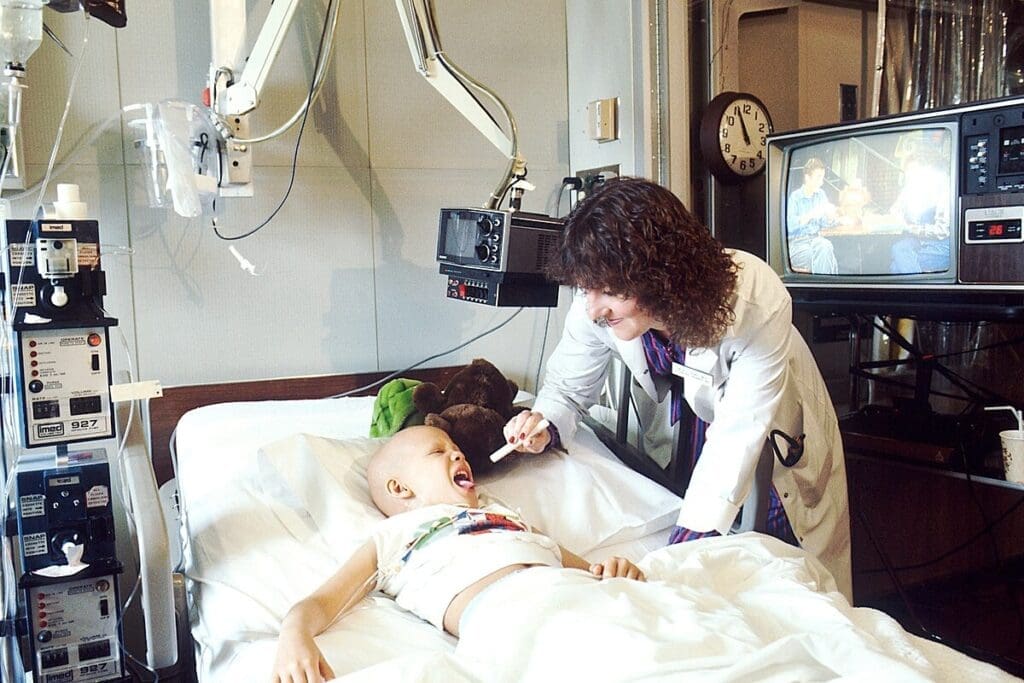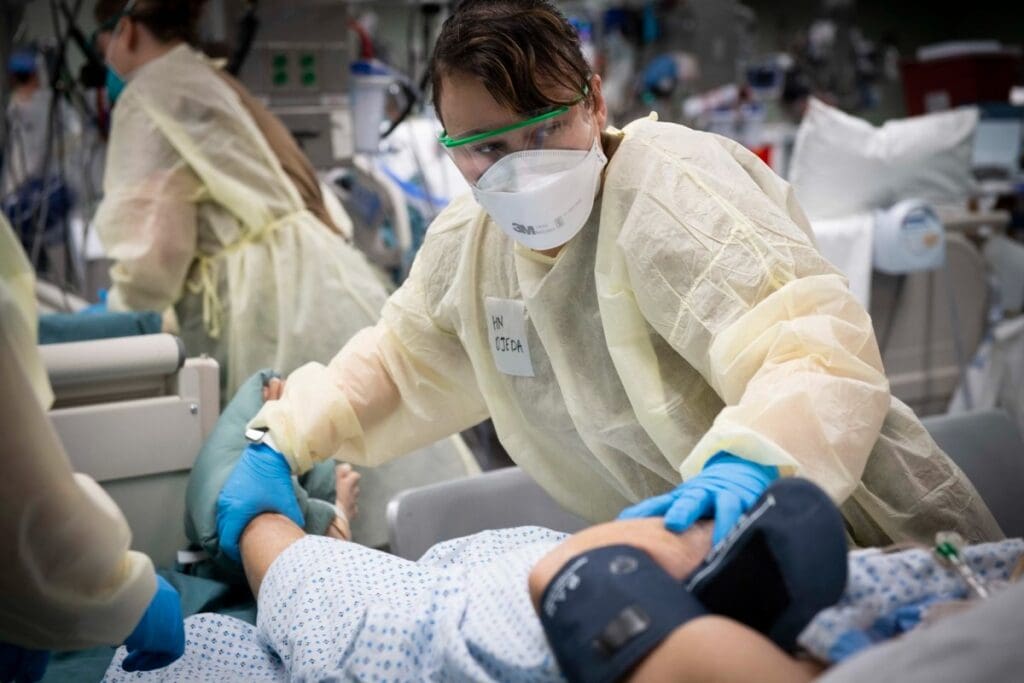Last Updated on November 24, 2025 by
A major congenital anomaly is a birth defect that greatly affects a person’s life. It impacts their health, life expectancy, or how they function physically and socially.
We call a major congenital anomaly a defect that starts before birth. It’s present at birth or before a fetus dies. It can affect a person’s health, survival, or how they think and move.
These defects can come from genes or the environment. They can affect many parts of the body.
Knowing about congenital anomalies is key to better healthcare. It helps us find new ways to help people with these issues.

It’s key to grasp the complexity of congenital anomalies for the right care and support. These are birth defects, or structural or functional issues present at birth.
The World Health Organization (WHO) says congenital anomalies affect about 6% of newborns worldwide. This leads to around 8 million affected births yearly. It also causes about 300,000 neonatal deaths each year.
Congenital anomalies are birth defects in the body’s structure or function. They can come from genetics, environment, or unknown causes. Major congenital malformations happen in 2 to 4 percent of live births. They are more common in spontaneous pregnancy losses.
It’s important to know the difference between major and minor congenital anomalies. Major ones have a big impact on health and life quality. Minor ones are less severe and often don’t need much medical help.
Major congenital anomalies can greatly affect life expectancy and quality of life. They can cause health issues, disabilities, and even death. The effect on families and healthcare systems is huge, showing the need for full care and support.
We see congenital anomalies as a big global health issue. Knowing their definition, importance, and effects is key to finding ways to tackle them.

It’s important to know how common major congenital anomalies are worldwide. These are issues that happen during a baby’s development in the womb. By looking at the numbers, we can see how big of a problem they are.
Major congenital anomalies happen in a lot of births around the globe. The World Health Organization (WHO) says about 1 in 33 babies is born with one. Some specific problems, like gastroschisis, are becoming more common in some places.
Common major anomalies include:
Congenital anomalies are a big reason for deaths and health problems in babies. They also cause many miscarriages and lost pregnancies. The death rate from these issues depends on the problem and where you live. In poorer countries, it’s harder to get the care needed because of less access to doctors and hospitals.
“Congenital anomalies are responsible for a significant proportion of neonatal and infant mortality globally, highlighting the need for improved prenatal care and early intervention.”
The number of congenital anomalies varies by place and group. Things like genes, environment, money, and healthcare access play a role. For example, some areas have more neural tube defects because of diet and folic acid use.
Fixing these issues needs a plan that includes stopping them before they start, finding them early, and treating them. Knowing how common these problems are helps us plan better and use our resources wisely.

It’s important to know about the different types of major congenital anomalies. These can affect one or more organ systems. We will look at the various categories and how common they are.
Cardiovascular defects are very common, making up about 35% of all cases. They can range from simple to complex. For example, atrial septal defects are simple, while tetralogy of Fallot is complex.
Key characteristics: Structural problems with the heart and great vessels.
Implications: These defects can be serious and even life-threatening if not treated properly.
About 21% of major congenital anomalies involve more than one system. These cases are complex and need a team effort to manage. A multidisciplinary approach is key to addressing the various issues.
Chromosomal and genetic conditions make up about 15% of major congenital anomalies. Examples include Down syndrome and Turner syndrome. These conditions require genetic counseling and long-term support.
Key aspects: Genetic counseling, long-term support, and managing related anomalies.
Renal malformations account for about 12% of major congenital anomalies. These can be mild or severe, needing surgery or long-term care. For example, anorectal malformation is rare, occurring in only 3.11 per 10,000 births.
Importance of early detection: Early detection can lead to better outcomes and management.
In conclusion, major congenital anomalies cover a wide range of conditions. Each has its own characteristics and needs. Knowing about these is vital for proper care and support for those affected and their families.
Major congenital anomalies come from a mix of genetic and external factors. Knowing these helps prevent and manage these issues.
Genetics are key in congenital anomalies. Chromosomal abnormalities and single-gene disorders cause many. Genetic counseling is vital for families with such histories.
Some environmental factors raise the risk of congenital anomalies. For example, teratogens like certain chemicals can cause problems. It’s important to avoid harmful substances during pregnancy.
“The role of environmental exposures in the etiology of congenital anomalies is complex and multifactorial, necessitating further research to elucidate the mechanisms involved.”
— Expert Opinion
Maternal health issues, like diabetes and obesity, increase congenital anomaly risk. Managing these conditions before and during pregnancy is critical.
Socioeconomic factors, like healthcare access and nutrition, also play a role. Nutritional deficiencies, like folic acid, raise neural tube defect risk. Preconception care and prenatal supplements are key.
Understanding congenital anomaly causes and risk factors helps us prevent them. This improves prenatal care and reduces these conditions.
Finding and diagnosing congenital anomalies needs both prenatal checks and postnatal exams. At livhospital.com, we use the latest research and team care to spot, prevent, and treat congenital anomalies.
Prenatal tests are key to spotting congenital anomalies early. These include:
A leading expert says, “Prenatal screening has changed how we find congenital anomalies. It lets us act early and help families make informed choices.”
“Thanks to new imaging and genetic tests, we can spot congenital conditions before birth,” says a top fetal medicine expert
If prenatal tests show a problem, we do more tests to confirm a congenital anomaly. These might be:
Not all congenital anomalies show up before birth. After birth, doctors do a thorough check to find any missed conditions. This includes a physical exam and more tests if needed.
Even with better tests, finding congenital anomalies early is hard. Things like when we screen, how clear the images are, and if there are many issues can make it tough. We know a defined congenital approach is key to tackling these problems and getting better at finding these conditions.
In summary, finding and diagnosing congenital anomalies needs a mix of prenatal screening, tests, and postnatal checks. By understanding what congenital definition means and how to detect these issues, we can help families more.
Managing congenital anomalies is key to better patient outcomes. These conditions often need a complex treatment plan. This plan involves many healthcare professionals and sometimes several interventions.
A team of experts is vital for managing congenital anomalies. This team includes pediatricians, surgeons, and specialists like cardiologists for heart defects. They work together to provide complete care, meeting all the patient’s needs.
Surgery is often needed to fix structural anomalies. The timing and type of surgery depend on the anomaly’s type and severity. For example, some heart defects need surgery right away, while others may wait until later.
Medical management is important for treating congenital anomalies. It’s used for conditions that aren’t life-threatening but need ongoing care. This includes medicines for symptoms, physical therapy, and monitoring to avoid problems.
Long-term support is essential for those with congenital anomalies. It includes psychological help, educational support, and vocational training. These services help individuals live fulfilling lives.
To prevent congenital anomalies, we need a variety of strategies. Understanding the causes and risk factors helps us create effective plans. We will look at key strategies like preconception care, prenatal supplements, avoiding harmful substances, and genetic counseling.
Preconception care is key to preventing congenital anomalies. It checks a woman’s health before pregnancy and fixes any issues. This includes looking at medical history, getting vaccinations up to date, and managing chronic conditions.
Key aspects of preconception care include:
Prenatal supplements are vital in preventing congenital anomalies. Folic acid, for example, greatly reduces the risk of neural tube defects. Iron and calcium are also important for fetal development.
We suggest pregnant women take a daily prenatal multivitamin with:
Teratogens are substances that can cause congenital anomalies. It’s important to avoid them during pregnancy. Common teratogens include certain medications, chemicals, and infections.
Examples of teratogens to avoid include:
Genetic counseling is vital in preventing congenital anomalies. It helps assess genetic risks and offers guidance on reproductive choices.
We recommend genetic counseling for individuals with:
By using these prevention strategies, we can lower the risk of congenital anomalies. A team effort from healthcare providers, patients, and families is necessary for success.
Major congenital anomalies (MCAs) affect many families around the world. They happen in 2% to 3% of newborns in the U.S. and Europe. Sadly, 71% to 96% of kids with MCAs face ongoing health issues and disabilities.
This brings big challenges in physical, mental, social, and financial areas. It hits parents hard, but moms are often hit the hardest.
Thanks to new medical care and tech, people with congenital anomalies are living better lives. Knowing what congenital anomalies are helps us give better care. It’s key to support and guide families dealing with these issues.
We need to keep researching, learning, and spreading the word about MCAs. By understanding more about them, we can improve lives and outcomes for those affected.
A congenital anomaly is a birth defect. It can affect a person’s health and life expectancy. It also impacts their physical and social abilities.
Major congenital anomalies are significant birth defects. They can greatly affect a person’s quality of life and health. They also impact life expectancy.
Birth defects can come from genetics or the environment. Maternal health issues and exposure to harmful substances are factors. So are socioeconomic conditions.
Birth defects are found through prenatal tests and postnatal checks. Diagnostic tests and procedures help identify them.
Treatment for birth defects includes surgery and medical care. A team of healthcare professionals provides ongoing support.
Not all birth defects can be prevented. But preconception care and avoiding harmful substances can help. Genetic counseling also plays a role.
Birth defects are significant. They can greatly affect a person’s life and health. They also impact families and healthcare systems.
Birth defects are common worldwide. They vary in prevalence and can affect different parts of the body.
The most common birth defects include heart issues and multiple system anomalies. Chromosomal and genetic conditions, and kidney problems are also common.
Genetic counseling helps understand birth defect risks. It aids in making informed reproductive choices. It also helps reduce the chance of future defects.
Families and healthcare systems can offer support. They provide care and long-term services. Access to a team of healthcare professionals is also important.
Subscribe to our e-newsletter to stay informed about the latest innovations in the world of health and exclusive offers!